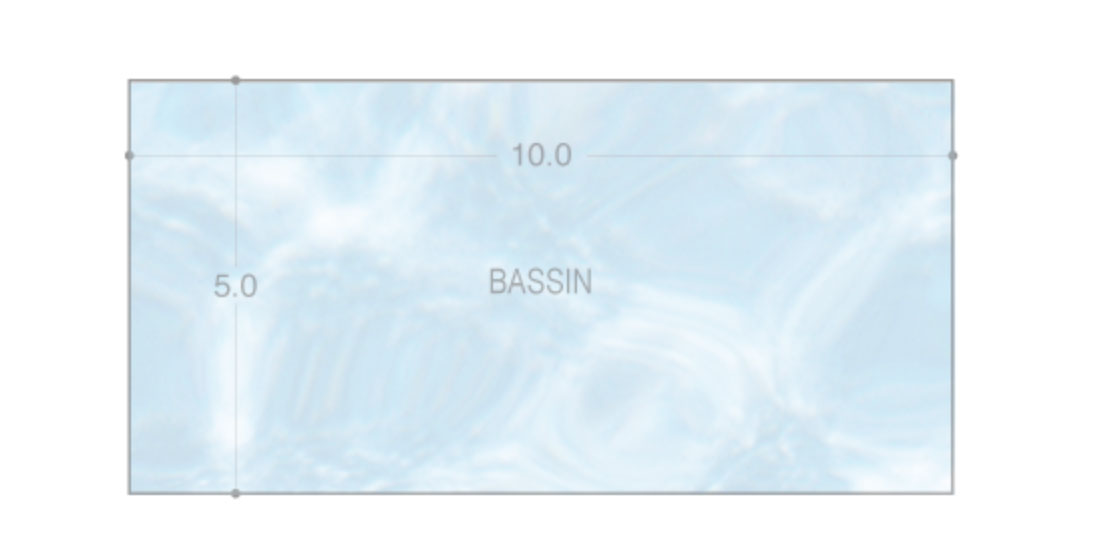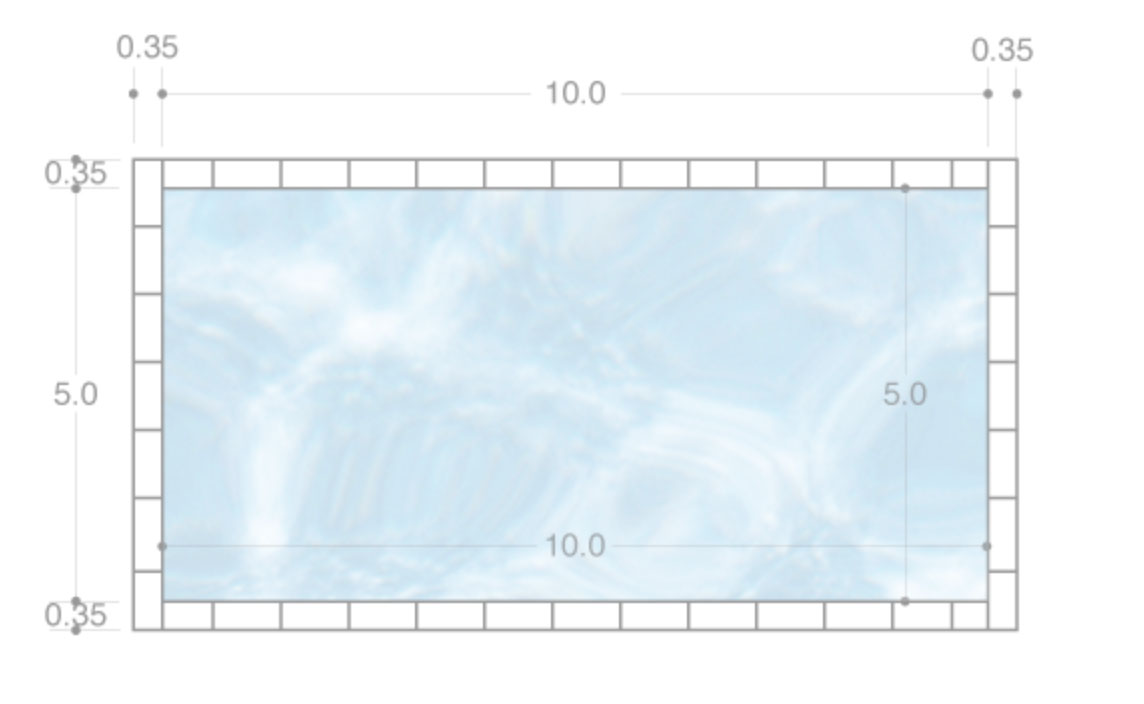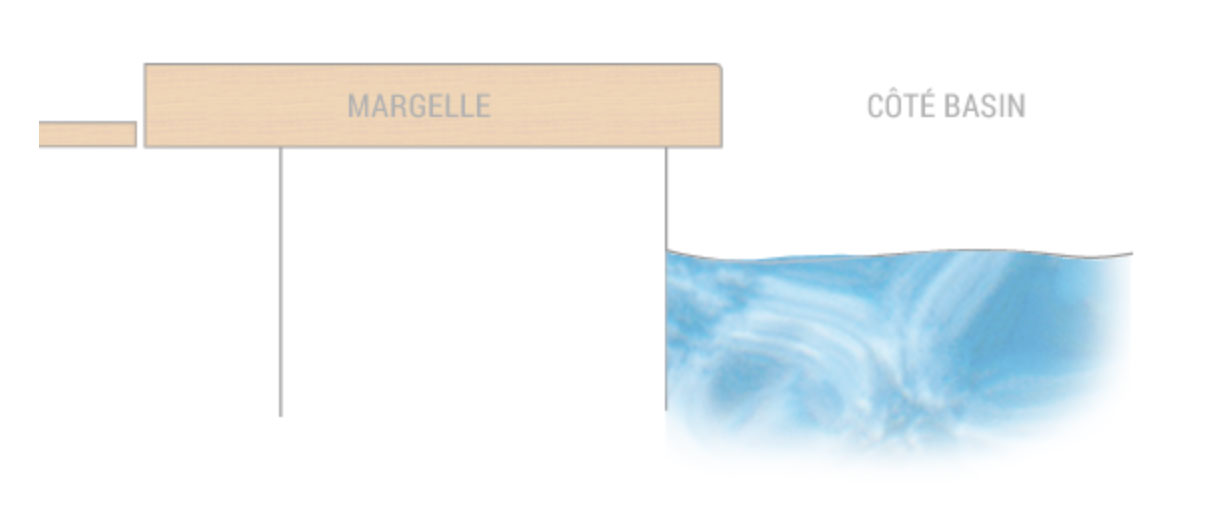All FAQ
All FAQ
Let's take for example a rectangular pool of 5 x 10 m

To these internal dimensions it is necessary to add the width of the stone which surrounds the pool
(35 cm for our standard width).

> Pool lengths: 10 m + 10 m + 5 m + 5 m = 30 linear metres
+
> Lengths of coping stones exceeding the pool dimensions (angles or straight coping stones):
0,35 m + 0,35 m + 0,35 m + 0,35 m = 1,4 linear metre
=
In total you will need 31.4 linear metres of pool coping stone in random lengths
or 53 fixed length pool coping stones
(without 4 mm joints)
To these dimensions, you can deduct the overlap of the pool coping stones around the pool which is usually between 1.5 and 2.5 cm

> overlap : 0.025 m + 0.025 m + 0.025 m + 0.025 m = 0.1 m (i.e. 10 cm).
And to be complete and precise you could also deduct the width of the joints between
each coping stone, but this calculation only give an approximate result depending on the type of laying : fixed or random length coping stones, presence of corner coping stones,...
So, following our example of a 10 m x 5 m pool we calculate
based on an average length of 60 cm in length for each coping stone
> 31.3 m ÷ 0.6 m = 52 pool coping stone approximately
> 52 copings stones with a joint between each of them ± 5 mm = ± 26 cm
We recommend that you always add 1 or 2 more coping stones just in the case of a measurement error or damage during fixing
Start typing to see products you are looking for.